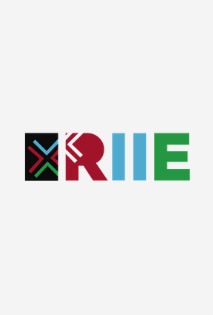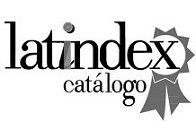Conocimiento didáctico del contenido y modelo didáctico en ciencias naturales. El caso de profesoras principiantes de educación inicial
DOI:
https://doi.org/10.30972/riie.073675Palabras clave:
Docentes principiantes, conocimiento didáctico del contenido, modelo didáctico, inducción en la enseñanzaResumen
Presentamos los resultados preliminares de un estudio realizado en el marco del proyecto “La construcción del Conocimiento Didáctico del Contenido (CDC) de profesores experimentados y principiantes de la Universidad Nacional del Nordeste. Estudio de casos múltiples”. Para esta comunicación analizamos las dimensiones de este constructo a través de la estrategia metodológica del estudio de casos (Stake, 2007; Neiman y Quaranta, 2006; Martínez Sánchez,2000). Entendemos que el Conocimiento Profesional Docente (CPD) tiene varios componentes, ente los cuales, Reynolds (1992) incluye al Conocimiento Didáctico del Contenido. Las investigaciones sobre el Conocimiento Didáctico del Contenido (Marcelo, 2006) refieren a estudios en los que se analiza específicamente el conocimiento que los profesores poseen respecto del contenido disciplinar, al modo en que lo transforman en conocimiento enseñable (Shulman, 1987) para hacerlo comprensible a los estudiantes y a su reconstrucción mediada por procesos de análisis y reflexión en torno de lo actuado (Schön, 1983). Concebimos al Conocimiento Didáctico del Contenido como marco que contribuye a comprender el papel de los diferentes componentes del modelo didáctico y sus vínculos al analizar las prácticas de las profesoras. Para este estudio, utilizamos el modelo didáctico propuesto por Estany & Izquierdo (2001) constituido por fundamentos epistemológicos, psicológicos, socio-pedagógicos y principios didácticos y elementos, a saber: finalidad, contenidos, comunicación y organización.
A fin de obtener información a efectos de explorar los modelos didácticos y su relación con las dimensiones del CDC, seleccionamos cuatro profesoras principiantes de Educación Inicial, que acreditan un año de antigüedad. Dado que los docentes noveles deben enseñar y aprender a enseñar, adquirir un adecuado conocimiento y competencia profesional en escaso tiempo, el del tránsito de estudiantes a profesores (Feiman, 2001 b; Marcelo,1999 a; Esteve,1997; Veenman,1984); optamos por trabajar- en esta primera instancia-, con el formato de guión conjetural (Bombini, 2006; Bombini y Labeur,2013) como una de las formas de abordar la planificación, basada en la narrativa y el conocimiento práctico del docente. La narrativa implica una experiencia cognitiva de anticipación de la enseñanza y desde este enfoque, la planificación da cuenta de la dimensión subjetiva del docente, quien pone en acción sus saberes prácticos. En consecuencia, escribir la planificación es un acto cognitivo, una “construcción metodológica” (Edelstein y Coria 2005) que articula los procesos reflexivos en torno a qué y cómo se enseña y qué y cómo se aprende. Aunque los resultados están en proceso de construcción, respecto del modelo didáctico y el CDC encontramos ciertas coincidencias con los hallazgos de Kaufman (1999), Marcelo (1998) y Jiménez Narváez (2006).
Descargas
Descargas
Publicado
Cómo citar
Número
Sección
Licencia
Aquellos autores/as que tengan publicaciones con esta revista, aceptan los términos siguientes:
- Los autores/as conservarán sus derechos de autor y garantizarán a la revista el derecho de primera publicación de su obra, el cuál estará simultáneamente sujeto a la Licencia de reconocimiento de Creative Commons que permite a terceros compartir la obra siempre que se indique su autor y su primera publicación esta revista.
- Los autores/as podrán adoptar otros acuerdos de licencia no exclusiva de distribución de la versión de la obra publicada (p. ej.: depositarla en un archivo telemático institucional o publicarla en un volumen monográfico) siempre que se indique la publicación inicial en esta revista.
- Se permite y recomienda a los autores/as difundir su obra a través de Internet (p. ej.: en archivos telemáticos institucionales o en su página web) antes y durante el proceso de envío, lo cual puede producir intercambios interesantes y aumentar las citas de la obra publicada. (Véase El efecto del acceso abierto).






.jpg)


